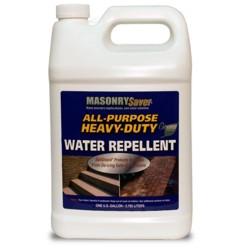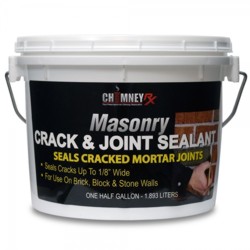Brick Wall Leaking
DEAR TIM: My wife and I moved into a new condominium building in March 2009. When it rains and there's heavy wind, we get water leaking through the brick. A gentle rain shower with the rain falling straight down causes no problems. What is causing the problem? There are many older brick buildings on the street that are well over 100 years old and none of them leak. Is there anything that can be done that will stop the leaks or do the exterior walls have to be completely rebuilt? Stanley P., Brooklyn, NY
DEAR STANLEY: What a darn shame you're experiencing this common problem. Not too many years ago, I used to do quite a bit of expert witness work in construction-defect cases. I was the lead witness in a huge case in the Midwest against a very large builder. He built many brick-veneer homes and every one of them had leakage similar to what you describe. My testimony about what was going on and how to fix it carried the day for the homeowners.
Here's a fact that's been known for hundreds of years: Brick walls leak. The leaks happen in the contact zone between the mortar and the brick. To the naked eye that may seem like a waterproof joint, but it's not. Often there are hairline cracks at these contact zones.
The vertical, or head, joints between two brick are the primary entry points for the water because modern bricklayers don't always completely fill this space with mortar. Even if they did, the first layer of brick you see on the outside of your condo would leak.
Two or three hundred years ago, this leakage issue was known. The builders who experienced leakage solved the problem by modifying how they built solid masonry buildings. They used different brick and they used a lime mortar different from today's high-strength mortars. The lime mortar has a unique self-healing property where it can grow new crystals when a hairline crack develops. It's too bad most masons don't use this lime mortar in modern construction.

This new mid-rise condo building experiences leaks through the brick walls during rainstorms. The cause is poor workmanship. Photo Credit: Stanley Pikovsky
Your new condominium building and the older solid masonry buildings in your neighborhood may look the same on the outside, but that's where it stops. The older brick buildings on your street have exterior walls that contain a minimum of two layers of brick. Some buildings have exterior walls that have three layers of brick.
The builders of old discovered that the brick you see on the outside needs to be a hard brick that resists weathering. These brick are fired in the kilns for a longer time and at a hotter temperature. Some brick like this are so hard they can resist Mother Nature's punishment for hundreds of years.
But the brick masons discovered they needed a softer brick that soaks up water. This was the brick they placed behind the one you see on the outside of the old buildings. These softer brick sucked up the rain water and then allowed it to evaporate back to the exterior of the building just after the rainstorm ended.
The dynamic of the rain water leakage is simple. Think about hammering a nail into wood. You tap the nail with the hammer and each hammer blow drives the nail deeper into the wood.
When a violent rainstorm hits your building, the first drop of water crashes against the brick and some water enters. The next droplet of rain along with the force of the wind pushes the first water droplet deeper into the wall. As the rainstorm continues along with the wind, soon you have a minor waterfall happening on the backside of the first layer of brick. This is the water that's leaking into your condo.
This leakage has been well documented by many building scientists for decades. The Brick Institute of America (BIA) has technical notes and bulletins that talk about this leakage and how to prevent it when building. Your building architect and builder should have followed the advice given by the BIA. These technical bulletins have been available for free for decades and can now be accessed easily from the BIA website.
A small company in Indiana has been working on solutions to this poor workmanship problem for decades. I met and know the owner of this company. He's written several industry white papers about brick veneer leakage. The name of the company is Saver Systems.
Your condo association can purchase two products from this company that may solve the problem. They require expert workmanship when applying them to get the best results.
 The first product is a silane-siloxane clear water repellent. This product is sprayed on the entire exterior wall. It's very important that a second worker operates a powerful leaf blower to drive the water repellent deep into the wall. This blower acts like the wind during a rainstorm and drives the water repellent deep into the wall.
The first product is a silane-siloxane clear water repellent. This product is sprayed on the entire exterior wall. It's very important that a second worker operates a powerful leaf blower to drive the water repellent deep into the wall. This blower acts like the wind during a rainstorm and drives the water repellent deep into the wall.
The second product that's needed is a clear crack and joint sealant. This is carefully brushed onto the mortar joints and it must cover the entire mortar joint but not carry over too much onto the brick. If this sealant gets on the brick, a white haze can develop over time. An experienced applicator can carefully apply the sealant so it just touches up against the brick sealing the invisible hairline cracks between the mortar and the brick.
 Realize that this fix is not guaranteed because the workmanship, materials used in your condominium building and/or the actual design may be so bad that these two products can't overcome the deficiencies. I'd do a test on one part of your building and see what happens. If it's successful, then treat all the brick walls.
Realize that this fix is not guaranteed because the workmanship, materials used in your condominium building and/or the actual design may be so bad that these two products can't overcome the deficiencies. I'd do a test on one part of your building and see what happens. If it's successful, then treat all the brick walls.
Column 1105
The above product links are affiliate links. I get a tiny commission if you purchase these from Amazon.
One Response to Brick Wall Leaking